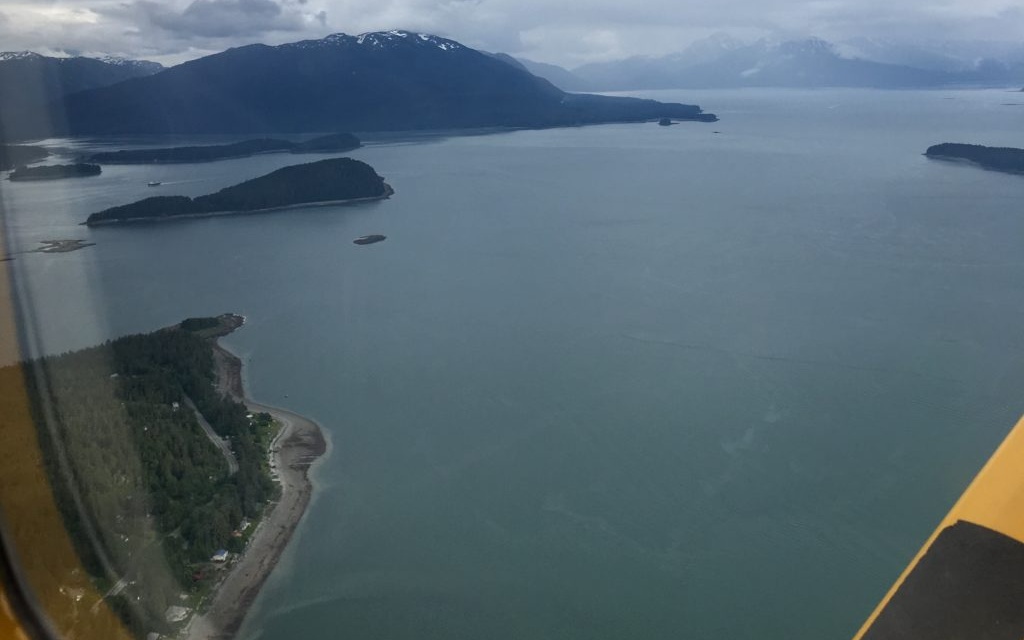
An investigation into an August commuter flight accident takes a close look at the aircraft’s fuel sources. A Haines-based pilot made an emergency water landing in the Juneau area in August. He, along with four passengers, swam safely to shore.
Early in the morning on Aug. 14, an Alaska Seaplanes flight left the Haines Airport and stopped in Skagway to pick up passengers before heading to Juneau.
But the pilot made an emergency water landing about 3 miles from the Juneau Airport.
Haines resident Luck Dunbar was on the plane. He spoke to KHNS the day of the accident.
“You’re sitting there thinking ‘This is it. This is it. Here we go,’” Dunbar recounted.
All four passengers and the pilot swam to shore on Coghlan Island uninjured.
Haines resident Josh Poirier was the pilot.
According to a preliminary report from the National Transportation Safety Board, Poirier said he measured the fuel tank levels before taking off.
He estimated 26 gallons in the right tank and 11 in the left. He used the right fuel tank during the flight.
Noreen Price, who is leading the NTSB’s investigation into the accident, said that should have been enough fuel to complete the trip.
But as he was approaching the Juneau International Airport, Poirier told the NTSB the engine fuel flow reduced to almost zero and lost all power.
Poirier said he switched to the left fuel tank but engine power was not restored.
He ditched the plane in the water near Coghlan Island and was able to keep the plane upright as he and the passengers exited the aircraft and swam to shore.
In an email, Alaska Seaplanes general manager Carl Ramseth said “I can’t say enough about the pilot Josh Poirier, whose actions contributed to the positive outcome the morning of Aug. 14.”
The aircraft sunk into the ocean, but was later recovered.
Price said the ability to recover the aircraft is significant for the investigation.
“When there is an accident we like to go to the scene of the accident so we can see what the wreckage looks like at the scene itself and examine it very closely,” Price said. “While we couldn’t go down to the bottom of the ocean to look at the plane, the ability to pull it up allows us to at least look at the flight controls, the fuel systems, the air systems, the engine itself.”
An inspection of the plane was conducted under the supervision of the NTSB by a Federal Aviation Administration safety inspector, Cessna and Continental air safety investigators, and a representative from Alaska Seaplanes.
According to the report, 2 gallons of fuel were recovered from the right tank and 11 from the left. An owner’s manual on the plane said once the fuel level gets down to 2 gallons, it’s unusable.
Price said there’s still a lot of uncertainty about the cause of the accident.
“We don’t know if there was anything mechanical wrong with the plane,” Price said. “In my preliminary report, I mentioned there was wrinkling with the fuel bladders. That is an abnormal condition for an airplane. We don’t know what caused the wrinkling in the fuel bladders, it may have contributed to the accident. At this time we really don’t know.”
Price said the NTSB is not yet finished with the preliminary phase of the investigation. A factual report and a probable cause should be completed within one to two years.
Seaplanes will continue to work with the NTSB while it determines the cause of the accident, Ramseth said.
